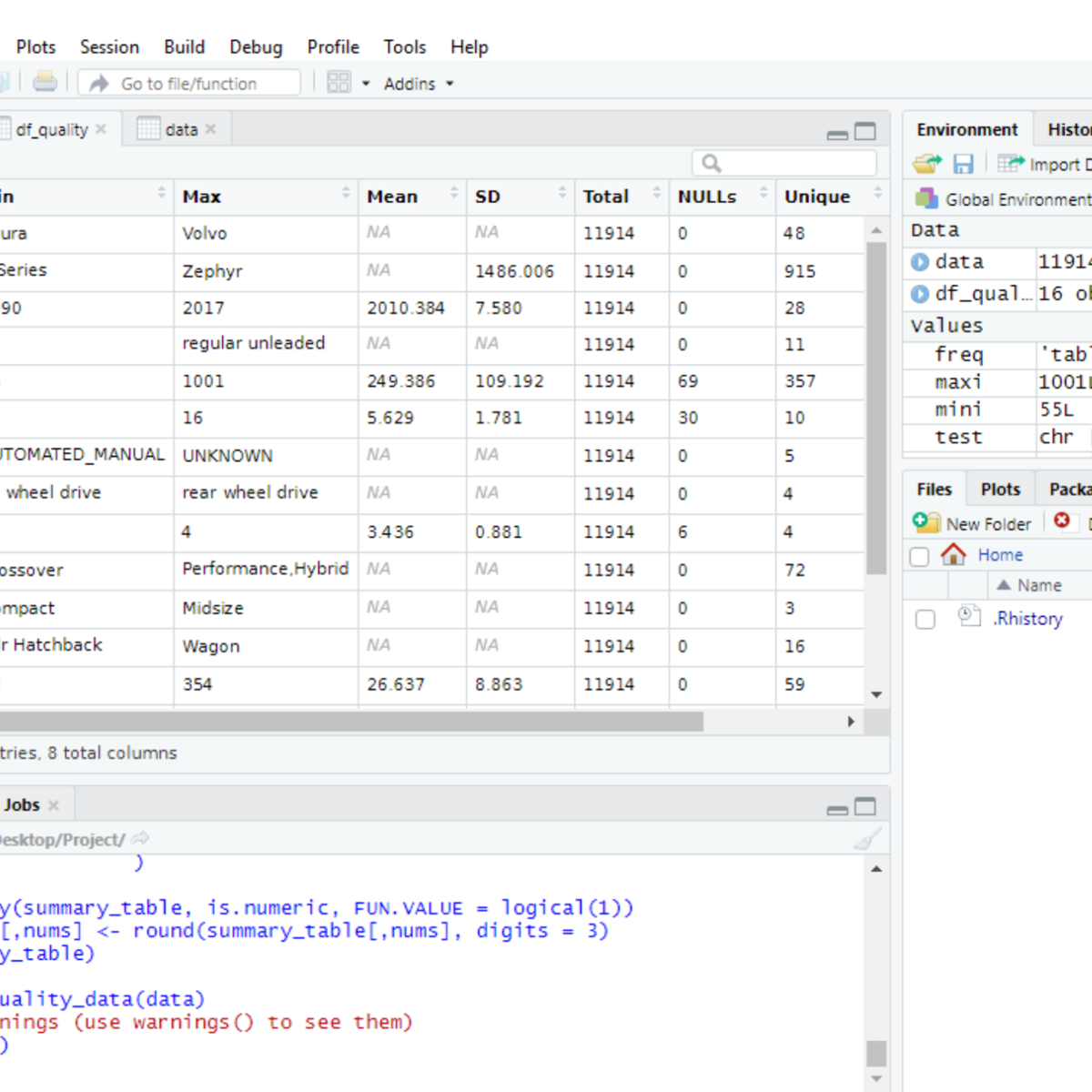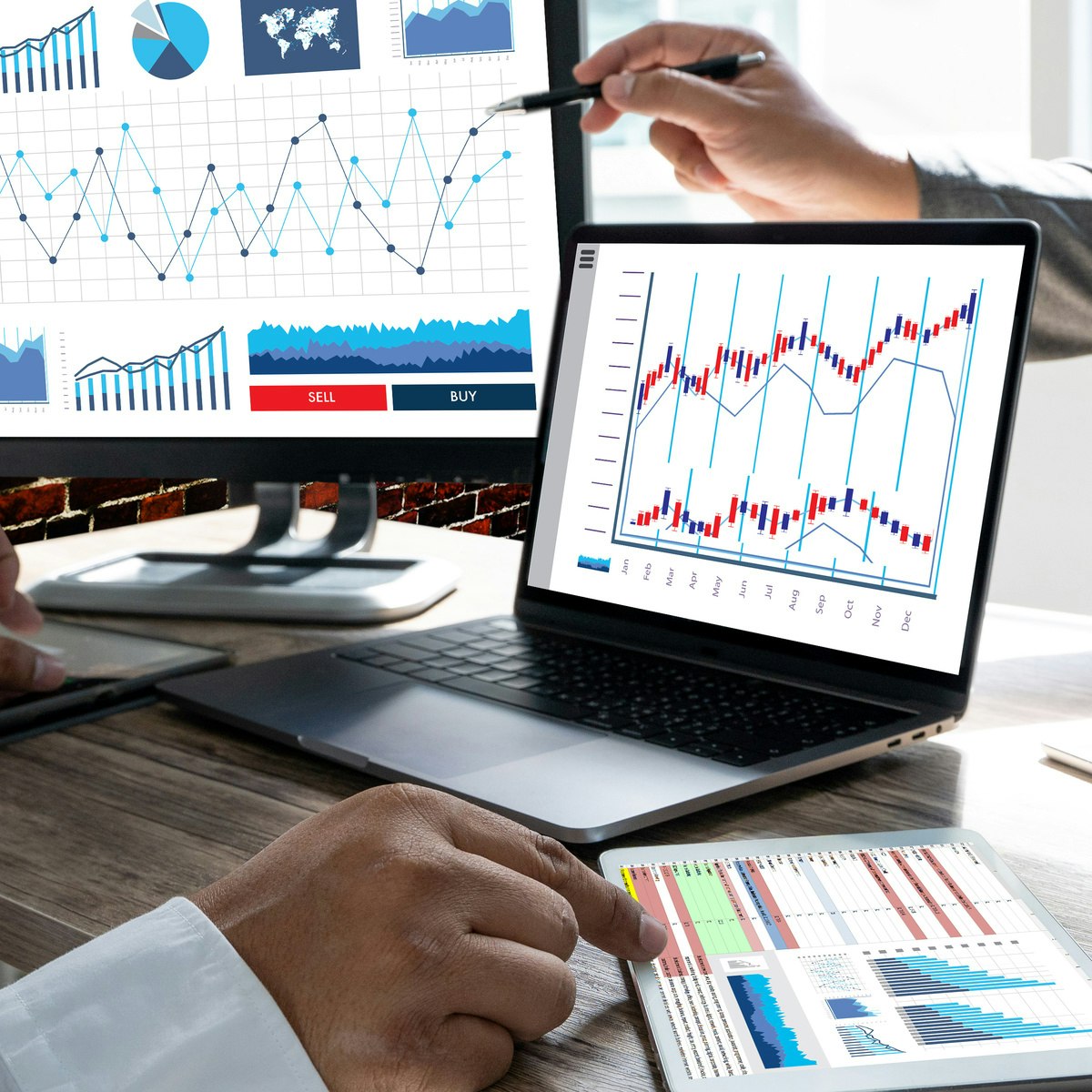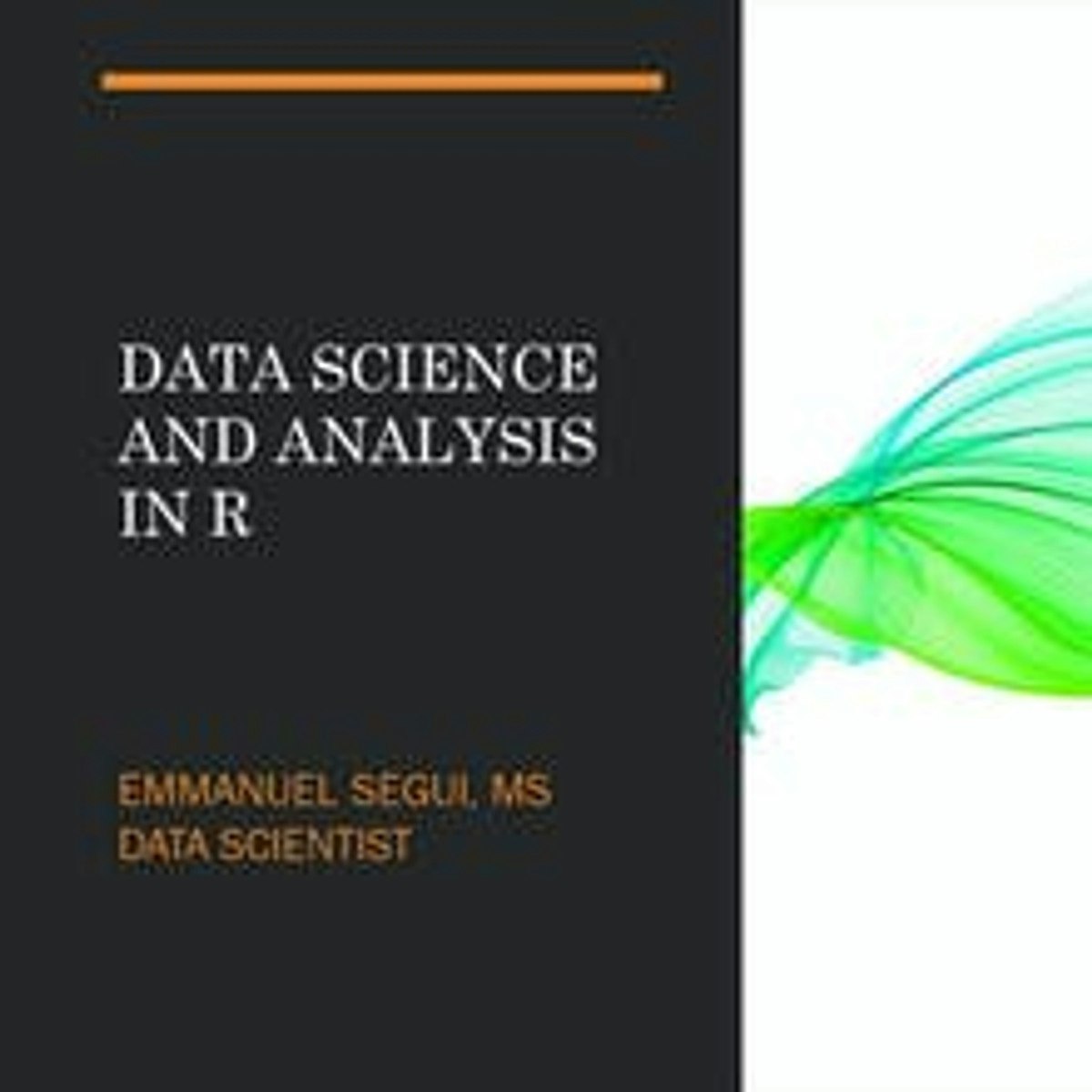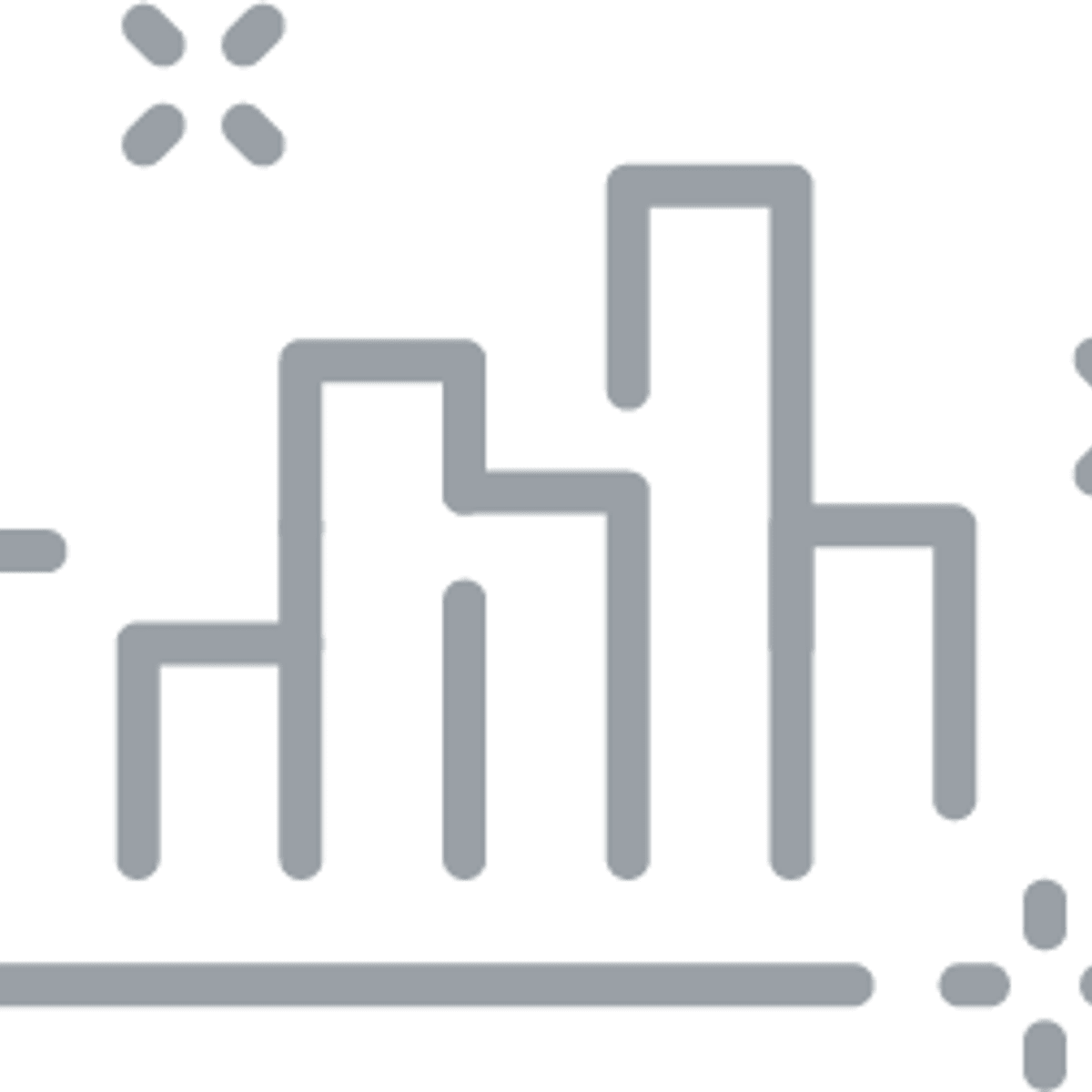Descriptive Statistics
vigating the World of Data: An Introduction to Descriptive Statistics
Descriptive statistics is a fundamental branch of statistics that focuses on summarizing and describing the main features of a collection of information, or a data set. It provides simple summaries about the sample and the observations that have been made. Think of it as creating a snapshot of your data, allowing you to understand its basic characteristics at a glance. This field is often the first step in any data analysis process, providing a foundation for more complex explorations.
Working with descriptive statistics can be quite engaging. Imagine being able to take a large, seemingly chaotic jumble of numbers and transforming it into clear, understandable insights. This process can reveal patterns and trends that might otherwise go unnoticed. Furthermore, the ability to effectively communicate these findings through charts, graphs, and summary numbers is a powerful skill in many fields, from business and healthcare to social sciences and beyond. For those who enjoy a blend of analytical thinking and clear communication, descriptive statistics offers a compelling area of study and application.
Introduction to Descriptive Statistics
This section will introduce you to the core ideas behind descriptive statistics, explore how it differs from other statistical approaches, touch on its historical roots, and highlight its diverse applications in the real world.
Definition and purpose of descriptive statistics
Descriptive statistics are informational coefficients used to summarize a given data set, which can represent either an entire population or a sample of one. Their primary purpose is to describe the basic features of the data in a study, providing simple summaries about the sample and the measures. Essentially, descriptive statistics help to simplify large amounts of data in a sensible way, making it easier to understand and interpret.
These statistics allow us to present quantitative data in a manageable form. For instance, if you had the scores of 100 students on a test, descriptive statistics would provide tools to summarize that information, such as calculating the average score or identifying the most common score. This summarization helps in understanding the overall performance of the students without having to look at each individual score. The goal is to provide a clear and concise overview of the data.
Descriptive statistics are crucial because they form the foundation of virtually every quantitative analysis of data. They help researchers and analysts gain initial insights, identify patterns, and communicate the essence of the data to others. Whether it's understanding market trends, patient outcomes in healthcare, or academic performance, descriptive statistics provide the necessary tools to make sense of the numbers.
Key differences from inferential statistics
Descriptive statistics and inferential statistics are two main branches of statistics, and they serve different purposes. Descriptive statistics aim to summarize and describe the characteristics of a sample or a dataset that is known. The focus is on presenting facts about the data you have collected.
Inferential statistics, on the other hand, goes beyond merely describing the data. It involves using data from a sample to make inferences, predictions, or generalizations about a larger population from which the sample was drawn. This often involves probability theory to estimate population parameters and test hypotheses. For example, after describing the average test score of a sample of 100 students, a researcher might use inferential statistics to estimate the average test score of all students in a particular school district.
A key distinction lies in their objectives: descriptive statistics describes what is within a specific dataset, while inferential statistics aims to deduce what might be in a broader context. Descriptive statistics are generally not developed on the basis of probability theory, whereas inferential statistics heavily rely on it. Even when a study’s main conclusions are drawn using inferential statistics, descriptive statistics are almost always presented first to provide an overview of the sample data.
Historical development and foundational contributors
The roots of descriptive statistics can be traced back to ancient times, with early forms of data collection and summarization used by civilizations like the Babylonians and Egyptians for purposes such as conducting a census. They maintained records for things like livestock and crop harvests. The term "statistics" itself evolved, originally designating the systematic collection of demographic and economic data by states. For at least two millennia, these data were mainly tabulations of human and material resources that might be taxed or put to military use.
The modern development of statistics, including descriptive methods, began to take shape in the 18th century. Thinkers and mathematicians started to develop more formal methods for summarizing and interpreting data. For example, John Arbuthnot's study in 1710 on the human sex ratio at birth, where he examined 82 years of London birth records, is an early example of using data to describe a phenomenon. Gottfried Achenwall, a German scholar, introduced the term "Statistik" in 1749, initially referring to the analysis of data about the state.
Over time, figures like Karl Pearson and Sir Ronald Aylmer Fisher made significant contributions to the broader field of statistics, developing many of the techniques still used today. While their work often extended into inferential statistics, the foundational principles of describing and summarizing data remained central. The simple tabulation of populations and economic data was the first way the topic of statistics appeared. More recently, collections of summarization techniques have been formulated under exploratory data analysis.
Real-world applications across industries
Descriptive statistics are widely used across numerous industries to gain insights and make informed decisions. In business, for example, companies use descriptive statistics to summarize sales figures, track inventory levels, and understand customer demographics. Market researchers rely on these methods to analyze survey data and identify consumer preferences and trends.
In healthcare, descriptive statistics help track patient outcomes, such as recovery times or readmission rates, allowing hospitals to improve treatment plans and allocate resources more effectively. Epidemiologists use descriptive statistics to summarize disease spread and recovery rates. Financial analysts use descriptive measures to understand market trends and assess the performance of investments.
Even in sports, descriptive statistics like batting averages or shooting percentages summarize player or team performance. Governments use descriptive statistics for census data, economic indicators, and public health information. Essentially, any field that deals with data benefits from the ability of descriptive statistics to simplify complexity and highlight key characteristics.
Core Concepts in Descriptive Statistics
To effectively use descriptive statistics, it's important to understand some core concepts. These include the different types of data you might encounter, how data can be organized into distributions and frequency tables, the scales used for measurement, and the basics of visualizing data.
Types of data (nominal, ordinal, interval, ratio)
Data can be classified into different types based on their characteristics and how they are measured. Understanding these types is crucial because it determines the kinds of descriptive statistics that can be appropriately applied. The four main types, or levels of measurement, are nominal, ordinal, interval, and ratio.
Nominal data is the simplest type. It consists of categories that cannot be ordered or ranked; they are simply different. Examples include gender (male, female), hair color (blonde, brown, black), or country of origin. You can count the frequency of each category, but you can't perform mathematical operations like averaging.
Ordinal data also involves categories, but these categories have a natural order or ranking. Examples include education level (high school, bachelor's, master's), customer satisfaction ratings (very dissatisfied, dissatisfied, neutral, satisfied, very satisfied), or income brackets (low, medium, high). While you can order the categories, the differences between them are not necessarily equal or meaningful.
Interval data has ordered categories, and the differences between these categories are meaningful and equal. A classic example is temperature measured in Celsius or Fahrenheit. The difference between 20°C and 30°C is the same as the difference between 30°C and 40°C. However, interval data does not have a "true zero" point, meaning a value of zero doesn't indicate the complete absence of the attribute. For instance, 0°C does not mean there is no temperature.
Ratio data is the most complex and informative type. It has all the properties of interval data (ordered, equal intervals) but also includes a true zero point. This means a value of zero indicates the complete absence of the attribute being measured. Examples include height, weight, age, income in exact currency, or the number of items sold. With ratio data, you can perform all types of mathematical operations, including calculating ratios (e.g., someone who is 6 feet tall is twice as tall as someone who is 3 feet tall).
Understanding these distinctions is important because the statistical techniques you can use depend on the level of measurement of your data.
Distributions and frequency tables
A distribution in statistics describes how often different values or categories occur in a dataset. It essentially shows the spread of the data. One of the most common ways to represent a distribution is through a frequency table.
A frequency table lists all the possible values or categories in a dataset along with the number of times (frequency) each value or category appears. For example, if you surveyed 50 people about their favorite color, a frequency table would list each color mentioned and how many people chose that color. This organized summary makes it easier to see patterns, such as which color is most popular or if preferences are evenly spread.
Frequency distributions can also be grouped. If you have a wide range of numerical data, like the ages of 1000 people, listing each individual age might not be very helpful. Instead, you can group the ages into intervals (e.g., 0-9 years, 10-19 years, etc.) and then count the frequency of people falling into each age group. This is known as a grouped frequency distribution. Frequency tables are a fundamental tool for summarizing data and are often the first step in creating visual representations like histograms or bar charts.
You may find these courses helpful for building a foundational understanding of how to work with distributions and frequency tables, often using software tools.
Scales of measurement
Scales of measurement, also referred to as levels of measurement, tell you how precisely variables are recorded and are directly related to the types of data discussed earlier: nominal, ordinal, interval, and ratio. Each scale has specific properties that determine what you can and cannot do with the data in terms of statistical analysis.
The nominal scale is used for categorical data where items are differentiated by name only, with no inherent order. Think of jersey numbers for athletes or types of cars. The numbers or names are just labels.
The ordinal scale allows for ranking or ordering of data, but the differences between the ranks are not necessarily equal or quantifiable. Examples include survey responses like "agree," "neutral," "disagree," or finishing positions in a race (1st, 2nd, 3rd). You know the order, but not the exact difference in performance or opinion between ranks.
The interval scale has ordered categories with equal and meaningful differences between values, but it lacks a true zero point. Temperature in Celsius or Fahrenheit is a common example. The interval between 10°C and 20°C is the same as between 20°C and 30°C, but 0°C doesn't signify the absence of temperature.
The ratio scale is the highest level of measurement. It possesses all the characteristics of the interval scale, plus it has a true zero point, indicating the absence of the quantity being measured. Height, weight, age, and income are examples. Because of the true zero, you can make meaningful ratio comparisons (e.g., "twice as much").
Choosing the correct statistical methods relies heavily on identifying the scale of measurement for your variables.
Data visualization basics (tables, charts)
Data visualization is a critical component of descriptive statistics, transforming numerical data into visual formats like tables and charts to make it easier to understand and interpret. Effective visualizations can quickly reveal patterns, trends, comparisons, and outliers that might be hidden in raw data.
Tables are a fundamental way to organize and present data. Frequency tables, as discussed earlier, show the distribution of data values. Cross-tabulations or contingency tables can be used to show the relationship between two categorical variables.
Charts and graphs offer more dynamic ways to represent data. Common types include:
- Bar charts: Used to compare the frequencies or values for different categories. The length of the bar represents the quantity.
- Pie charts: Show the proportion of each category within a whole. Each slice represents a percentage of the total.
- Histograms: Similar to bar charts but used for numerical data that is grouped into intervals. The bars represent the frequency of data points within each interval, and the bars typically touch to indicate continuous data.
- Line graphs: Often used to show trends over time. Data points are plotted and connected by lines.
- Scatter plots: Used to visualize the relationship between two numerical variables. Each point on the plot represents a pair of values.
The choice of which table or chart to use depends on the type of data you have and the message you want to convey. Good data visualization makes complex information accessible and engaging.
For those looking to delve into the practical aspects of data visualization using popular tools, these courses offer hands-on experience.
Measures of Central Tendency
Measures of central tendency are statistics that describe the center or typical value of a dataset. They provide a single value that summarizes the entire distribution of scores. The three most common measures of central tendency are the mean, median, and mode.
Mean, median, and mode calculations
The mean is what most people refer to as the average. It is calculated by summing all the values in a dataset and then dividing by the total number of values. For example, the mean of the numbers 2, 4, 6, and 8 is (2+4+6+8) / 4 = 20 / 4 = 5.
The median is the middle value in a dataset that has been ordered from least to greatest. If there is an even number of values, the median is the average of the two middle values. For the dataset 2, 4, 6, 8, the values are already ordered. Since there are four values, the two middle values are 4 and 6. The median is (4+6) / 2 = 5. For the dataset 1, 2, 3, 4, 5, the median is 3 (the middle value).
The mode is the value that appears most frequently in a dataset. A dataset can have one mode (unimodal), more than one mode (multimodal), or no mode if all values appear with the same frequency. For example, in the dataset 1, 2, 2, 3, 4, 5, 5, 5, the mode is 5 because it appears three times, more than any other number. In the dataset 1, 1, 2, 3, 3, 4, there are two modes: 1 and 3 (bimodal).
Appropriate use cases for each measure
The choice of which measure of central tendency to use depends on the type of data (nominal, ordinal, interval, ratio) and the shape of the data's distribution.
The mean is typically used for interval and ratio data that is symmetrically distributed (i.e., not heavily skewed). It is sensitive to outliers (extreme values) because all values are included in its calculation. For example, if you are summarizing house prices and there is one extremely expensive mansion, the mean price might be inflated and not represent the typical house price.
The median is also used for interval and ratio data, and it's particularly useful when the data is skewed or contains outliers. Because the median only considers the middle value(s), it is not affected by extreme scores. It is also the appropriate measure of central tendency for ordinal data.
The mode is the only measure of central tendency that can be used with nominal data. It is also sometimes used with ordinal, interval, or ratio data, especially to identify the most common category or value. For example, a clothing store might want to know the mode for shirt sizes sold to optimize inventory.
Impact of outliers and skewed distributions
Outliers are data points that are significantly different from other observations in a dataset. Skewed distributions are those that are not symmetrical; they have a "tail" that stretches out to one side more than the other.
The mean is highly susceptible to the influence of outliers and skewed distributions. A single very high or very low value can pull the mean significantly in that direction, making it a less representative measure of the center. For example, if most employees in a company earn around $50,000, but the CEO earns $5,000,000, the mean salary will be much higher than what a typical employee earns.
The median, on the other hand, is robust to outliers and is often a better measure of central tendency for skewed distributions. Since it is based on the middle value, extreme values at either end of the distribution do not affect it. In the salary example above, the median salary would provide a more accurate picture of the typical employee's earnings.
The mode is generally not affected by outliers unless an outlier happens to be the most frequent value, which is rare. For skewed distributions, the mode will represent the peak of the distribution, which might be different from the mean or median.
Understanding how outliers and skewness affect these measures is crucial for accurate data interpretation. Often, it's beneficial to report more than one measure of central tendency, especially if the data is not symmetrical.
Practical examples from business and research
In business, measures of central tendency are used constantly. A retail company might calculate the mean daily sales to track performance, the median transaction value to understand typical customer spending, or the mode of products sold to identify bestsellers. A human resources department might use the median salary to ensure pay equity or the mean employee tenure to gauge retention.
In research, these measures are fundamental. A medical researcher might report the median survival time for patients with a certain disease because survival data is often skewed. An educational researcher might compare the mean test scores of students taught with different methods. A psychologist studying reaction times might use the median reaction time to minimize the impact of occasional very slow or very fast responses (outliers).
For example, a market researcher surveying customer satisfaction on a scale of 1 to 5 might report the mode to show the most common satisfaction level, the median to find the central response, and perhaps the mean if the data is reasonably symmetric. Each measure provides a different piece of information about the "center" of the customer satisfaction data.
These courses can provide a solid understanding of central tendency measures and their applications in various contexts.
Measures of Variability
While measures of central tendency describe the center of a dataset, measures of variability (also known as measures of dispersion or spread) describe how spread out or dispersed the data points are. They tell us whether the data values are clustered closely together or are widely scattered. Understanding variability is just as important as understanding central tendency for a complete picture of the data.
Range and interquartile range
The range is the simplest measure of variability. It is calculated as the difference between the maximum value and the minimum value in a dataset. For example, if the test scores are 60, 70, 75, 80, and 95, the minimum is 60 and the maximum is 95. The range is 95 - 60 = 35. While easy to calculate, the range is very sensitive to outliers because it only uses the two most extreme values.
The interquartile range (IQR) is a more robust measure of variability that is less affected by outliers. To understand the IQR, you first need to know about quartiles. Quartiles divide an ordered dataset into four equal parts.
- The first quartile (Q1) is the value below which 25% of the data falls.
- The second quartile (Q2) is the median, with 50% of the data below it.
- The third quartile (Q3) is the value below which 75% of the data falls.
The IQR is calculated as the difference between the third quartile (Q3) and the first quartile (Q1): IQR = Q3 - Q1. It represents the spread of the middle 50% of the data. Because it focuses on the middle half of the data, it is not influenced by extreme values at either end of the distribution.
Variance and standard deviation
Variance and standard deviation are two closely related and very common measures of variability that describe the average distance of each data point from the mean of the dataset.
The variance is calculated by:
- Finding the mean of the data.
- Subtracting the mean from each data point (this gives the deviation of each point).
- Squaring each of these deviations.
- Summing all the squared deviations.
- Dividing this sum by the number of data points (for a population variance) or by the number of data points minus 1 (for a sample variance).
The result is in squared units of the original data, which can sometimes be hard to interpret directly.
The standard deviation is simply the square root of the variance. This brings the measure of spread back into the original units of the data, making it more interpretable. A small standard deviation indicates that the data points tend to be close to the mean (low variability), while a large standard deviation indicates that the data points are spread out over a wider range of values (high variability).
Both variance and standard deviation use all data points in their calculation and are therefore sensitive to outliers, though less so than the range.
Coefficient of variation
The coefficient of variation (CV) is a relative measure of variability. It expresses the standard deviation as a percentage of the mean. The formula is: CV = (Standard Deviation / Mean) * 100%.
The CV is particularly useful when comparing the variability of two or more datasets that have different means or are measured in different units. For example, imagine you want to compare the variability in the weights of elephants and mice. Elephants have a much larger mean weight and likely a larger standard deviation in absolute terms. However, their CV might be smaller than that of mice, indicating that, relative to their average weight, elephant weights are less variable.
A smaller CV indicates less relative variability, while a larger CV indicates greater relative variability. It's a dimensionless number, meaning it has no units, which facilitates comparisons across different scales and types of measurements.
Real-world implications of variability analysis
Understanding variability has significant real-world implications across many fields. In finance, variability (often measured by standard deviation or variance) is a key component of risk assessment. Investments with higher variability in returns are generally considered riskier. Financial analysts use these measures to make investment decisions and manage portfolios.
In manufacturing and quality control, minimizing variability is often a primary goal. For example, a company producing bolts wants them all to be very close to the specified diameter. High variability would mean many bolts are too large or too small, leading to defects and waste. Statistical process control charts often use measures like range and standard deviation to monitor and control variability in production processes.
In healthcare, understanding the variability in patient responses to a treatment can be crucial. If a drug has highly variable effects, it might be very effective for some patients but ineffective or even harmful for others. Researchers analyze variability to understand the consistency and reliability of treatments.
In economics, measures of income dispersion like the Gini coefficient (related to variability concepts) are used to understand income inequality within a population. High variability in income can have significant social and political implications.
Essentially, analyzing variability helps in understanding consistency, predictability, risk, and the range of possible outcomes in any process or dataset.
These courses offer deeper insights into measures of variability and their practical applications, often incorporating software tools for calculation and interpretation.
For those interested in foundational texts that cover these statistical concepts, these books are highly recommended.
Descriptive Statistics in Data Visualization
Data visualization is the art and science of representing data graphically. In the context of descriptive statistics, visualization plays a crucial role in communicating insights effectively. Well-designed charts and plots can make complex data understandable at a glance, revealing patterns, trends, distributions, and relationships that might be difficult to discern from numbers alone.
Histograms and box plots
Histograms are graphical representations of the distribution of numerical data. To create a histogram, the data is first divided into a series of intervals or "bins" of equal width. Then, bars are drawn for each bin, where the height of the bar corresponds to the frequency (or relative frequency) of data points falling into that bin. The bars in a histogram are typically drawn adjacent to each other to indicate that the data is continuous. Histograms provide a visual summary of the data's central tendency, variability, and shape (e.g., whether it's symmetric, skewed, unimodal, or multimodal).
Box plots (also known as box-and-whisker plots) are another powerful tool for visualizing the distribution of numerical data, particularly for comparing distributions across different groups. A box plot displays several key descriptive statistics:
- The median (Q2), which is marked by a line inside the box.
- The interquartile range (IQR), represented by the length of the box. The bottom of the box is the first quartile (Q1), and the top is the third quartile (Q3).
- The whiskers, which extend from the ends of the box to show the range of the rest of the data, typically up to 1.5 times the IQR from Q1 and Q3.
- Outliers, which are individual data points that fall beyond the whiskers and are plotted as individual points.
Box plots are excellent for quickly assessing the central tendency, spread, and symmetry of a dataset, as well as identifying potential outliers.
Scatter plots for correlation analysis
Scatter plots are used to visualize the relationship between two numerical variables. Each point on a scatter plot represents a pair of values, with one variable plotted on the x-axis and the other on the y-axis. By examining the pattern of points, you can get an idea of the direction (positive or negative) and strength of the relationship (correlation) between the two variables.
For example:
- If the points tend to cluster around a line that slopes upwards from left to right, it suggests a positive correlation (as one variable increases, the other tends to increase).
- If the points tend to cluster around a line that slopes downwards from left to right, it suggests a negative correlation (as one variable increases, the other tends to decrease).
- If the points are scattered randomly with no clear pattern, it suggests little or no correlation.
Scatter plots are a fundamental tool in exploratory data analysis and are often the first step before performing more formal correlation or regression analysis.
This course provides an introduction to visualizing data, which is a key skill in descriptive statistics.
Heatmaps and density plots
Heatmaps are graphical representations of data where values in a matrix are represented as colors. They are particularly useful for visualizing the relationships between two categorical variables or for displaying the magnitude of a phenomenon across a two-dimensional space. For example, a heatmap could show the correlation coefficients between multiple pairs of variables, with warmer colors indicating stronger positive correlations and cooler colors indicating stronger negative correlations. They can also be used to visualize contingency tables, showing the frequency of co-occurrence of different categories.
Density plots, or kernel density plots, are used to visualize the distribution of a numerical variable. They can be thought of as a smoothed version of a histogram. Instead of using discrete bins, a density plot estimates the underlying probability density function of the data. This results in a smooth curve that shows the shape of the distribution more clearly, especially when dealing with smaller datasets or when trying to identify subtle features like multiple peaks. Density plots are excellent for understanding the overall shape, modality (number of peaks), and skewness of a distribution.
Tools for creating effective visualizations
Numerous software tools are available to help create effective data visualizations, ranging from simple to highly sophisticated. Some popular options include:
- Spreadsheet software like Microsoft Excel or Google Sheets: These tools offer basic charting capabilities suitable for many common visualizations like bar charts, pie charts, line graphs, and scatter plots. They are accessible and widely used.
- Statistical software packages like R (with libraries like ggplot2), Python (with libraries like Matplotlib, Seaborn, and Plotly), SPSS, and Minitab: These provide a much wider range of advanced visualization options and greater flexibility for customization. They are standard tools in academic research and data science.
- Business Intelligence (BI) and data visualization platforms like Tableau and Microsoft Power BI: These tools are designed specifically for creating interactive dashboards and compelling visualizations for business reporting and analysis. They often allow users to connect to various data sources and explore data visually without extensive coding.
The choice of tool often depends on the complexity of the visualization needed, the user's technical skills, and the context in which the visualization will be used. Regardless of the tool, the goal is to create visualizations that are clear, accurate, and effectively communicate the key insights from the data.
These courses offer practical experience with widely used data visualization tools.
Further explore topics related to data visualization and analysis through these OpenCourser resources.
Formal Education Pathways
For those looking to build a career that heavily utilizes descriptive statistics, or to apply these skills rigorously within a specific domain, formal education provides a structured path. This can range from undergraduate coursework to specialized graduate programs and research opportunities.
Undergraduate statistics coursework
A solid foundation in descriptive statistics is typically introduced in introductory statistics courses at the undergraduate level. These courses are common requirements or electives in a wide array of majors, including mathematics, computer science, economics, psychology, sociology, business, biology, and engineering. Students learn the fundamental concepts: types of data, measures of central tendency and variability, probability basics, and data visualization techniques.
Beyond the initial introductory course, students might take further statistics courses that delve deeper into data analysis methods, probability theory, and the beginnings of inferential statistics. For those specifically interested in a statistics-focused career, a bachelor's degree in statistics, mathematics with a statistics concentration, or data science is often pursued. These programs provide a more comprehensive theoretical and applied understanding of statistical methods.
Online courses can be an excellent way to build a foundational understanding or supplement existing undergraduate studies. Many universities and platforms offer introductory statistics courses that cover descriptive statistics in depth. These courses often provide flexibility and can be tailored to fit a student's schedule.
These introductory courses are excellent starting points for undergraduate students or anyone new to statistics.
Graduate-level specializations
For more advanced roles and research positions, a graduate degree (Master's or Ph.D.) in statistics, biostatistics, data science, or a related quantitative field is often necessary. At the graduate level, students explore statistical theory in much greater depth and learn advanced statistical modeling techniques, experimental design, and specialized applications.
Master's programs typically focus on applied statistics, preparing students for roles as statisticians or data analysts in industry, government, or research institutions. These programs often include coursework in areas like regression analysis, multivariate analysis, time series analysis, and statistical computing. Many programs also offer specializations in areas like biostatistics (applying statistics to biological and health-related data), econometrics (applying statistical methods to economic data), or data science (which combines statistics, computer science, and domain expertise).
Online master's programs in statistics and data science are becoming increasingly common, offering a pathway for working professionals or those unable to attend traditional on-campus programs to gain advanced qualifications.
Research opportunities in PhD programs
A Ph.D. in statistics or a related field is typically pursued by those interested in academic careers (as professors and researchers) or high-level research positions in industry or government. Ph.D. programs involve advanced coursework, comprehensive exams, and, most importantly, original research culminating in a doctoral dissertation.
Research in statistics can span a vast range of theoretical and applied areas. Theoretical research might focus on developing new statistical methodologies, exploring the mathematical properties of statistical models, or advancing probability theory. Applied research involves using statistical methods to solve problems in specific domains, such as developing new statistical models for genetic data analysis, improving methods for clinical trials, or creating more accurate forecasting models for economic indicators. Descriptive statistics, while foundational, often underpins the exploratory phase of more complex research projects, helping to understand the data before advanced modeling is applied.
Integration with domain-specific fields (e.g., psychology, economics)
Descriptive statistics are not just for statisticians; they are essential tools in virtually every field that collects and analyzes data. Many academic disciplines integrate statistical training, particularly descriptive statistics, directly into their curricula.
In psychology, researchers use descriptive statistics to summarize data from experiments and surveys, such as average scores on personality tests, the distribution of reaction times, or the frequency of certain behaviors. [019nfm, nld4mf]
In economics, descriptive statistics are used to summarize economic indicators like GDP growth rates, unemployment figures, and inflation rates. Econometricians use these foundational summaries before applying more complex models. [h0uj0v]
In biology and medicine (biostatistics), descriptive statistics summarize patient characteristics in clinical trials, describe the prevalence of diseases, or analyze genetic data. [y5prta]
In business and marketing, they are used to understand customer behavior, sales trends, and market research data. [h2dvzp, ymuj2z, zelmu0]
The ability to understand and apply descriptive statistics is a valuable skill that enhances research and decision-making across these and many other domains. Online courses can be particularly helpful for professionals in these fields who wish to strengthen their statistical skills without pursuing a full statistics degree. Mathematics and Data Science are broad categories on OpenCourser where relevant courses can be found.
These courses illustrate the application of statistics within specific domains.
For those looking to explore statistics within a broader mathematical or research context, these resources are valuable.
These books provide comprehensive coverage suitable for academic study.
Career Applications of Descriptive Statistics
A strong understanding of descriptive statistics is a valuable asset in a wide range of careers. From entry-level positions to senior analytical roles, the ability to summarize, interpret, and present data is highly sought after by employers across various industries.
Entry-level roles requiring statistical analysis
Many entry-level positions involve working with data and require at least a basic understanding of descriptive statistics. Roles such as Data Analyst, Research Assistant, Junior Analyst, or Marketing Coordinator often involve tasks like collecting data, cleaning datasets, calculating summary statistics (mean, median, mode, range, standard deviation), and creating basic charts and reports to present findings. [glc9ct]
For example, a junior data analyst might be asked to summarize website traffic data, identifying average session duration, most visited pages (mode), and the range of daily visitors. A research assistant in a social science lab might help tabulate survey responses and calculate descriptive statistics for different demographic groups. These roles often serve as a stepping stone to more advanced analytical careers. Online courses focusing on practical data analysis skills using tools like Excel, R, or Python can be particularly beneficial for those seeking such entry-level positions.
These courses provide foundational skills often required in entry-level analytical roles.
Industry-specific applications (market research, healthcare)
The application of descriptive statistics is tailored to the specific needs of different industries.
In market research, descriptive statistics are fundamental. [i4nsjl] Analysts use them to summarize survey responses, analyze customer demographics, describe purchasing patterns, and measure brand awareness. For instance, they might calculate the average age of a target audience, the most frequently cited reason for product dissatisfaction (mode), or the distribution of income levels among potential customers. These insights help companies understand their market, identify opportunities, and develop effective marketing strategies.
In healthcare, descriptive statistics are used extensively to summarize patient data, track disease prevalence, and evaluate the effectiveness of treatments. For example, hospital administrators might track the average length of stay for patients with specific conditions, the median waiting time in an emergency room, or the distribution of patient satisfaction scores. Public health officials use descriptive statistics to monitor disease outbreaks by reporting the number of cases, demographic characteristics of affected individuals, and geographic distribution.
Other industries also rely heavily on descriptive statistics. Financial analysts use them to summarize stock performance and market trends. [mxc3wi] Manufacturing companies use them for quality control, summarizing defect rates and production efficiency.
These courses offer a glimpse into industry-specific applications of data analysis.
Skill progression in analytical careers
A career in analytics often involves a progression of skills, with descriptive statistics forming the foundational layer. As professionals gain experience and expertise, they typically move from primarily descriptive tasks to more complex analytical work involving inferential statistics, predictive modeling, and machine learning.
An early-career analyst might focus on generating reports and dashboards that summarize current and historical data. With experience, they might start to conduct more in-depth exploratory data analysis, using descriptive statistics and visualizations to identify trends and formulate hypotheses. Further progression could lead to roles like Data Scientist or Senior Analyst, where they design experiments, build predictive models, and use advanced statistical techniques to solve complex business problems. [jj2ao8]
However, even in advanced roles, descriptive statistics remain crucial. They are used to understand new datasets, communicate findings to non-technical stakeholders, and validate the results of more complex models. Continuous learning, including through online courses and professional development, is important for skill progression in analytical careers. The Career Development section on OpenCourser can offer resources for planning such progression.
Combining technical and domain knowledge
To be truly effective in applying descriptive statistics (and any data analysis), a combination of technical skills and domain knowledge is essential. Technical skills include proficiency in statistical concepts, data manipulation, and the use of analytical software (like R, Python, Excel, SPSS, Tableau). [b59vji, 1tt0vw, dm1k86]
Domain knowledge refers to understanding the specific industry or field in which the analysis is being conducted. For example, a healthcare analyst needs to understand medical terminology, healthcare processes, and relevant regulations. A financial analyst needs to understand financial markets, investment instruments, and economic principles. [mxc3wi]
Combining these two aspects allows analysts to ask the right questions, interpret data in a meaningful context, identify relevant patterns, and communicate findings in a way that resonates with stakeholders in that field. Someone with strong technical skills but little domain knowledge might produce statistically sound results that are practically irrelevant or misinterpreted. Conversely, someone with deep domain knowledge but weak technical skills may struggle to extract valuable insights from data. Successful analytical professionals continuously develop both their technical abilities and their understanding of their chosen domain.
Consider these career paths that heavily rely on statistical skills.
These books can help bridge the gap between statistical theory and practical application.
Ethical Considerations in Descriptive Statistics
While descriptive statistics are powerful tools for summarizing data, their application also comes with ethical responsibilities. Statisticians and data analysts must ensure that their work is conducted with integrity, transparency, and a commitment to avoiding harm. The American Statistical Association (ASA) provides comprehensive ethical guidelines for statistical practice.
Data privacy concerns
When working with data, especially data related to individuals, protecting privacy is paramount. Descriptive statistics can sometimes inadvertently reveal sensitive information if not handled carefully. For example, if a dataset is very small, reporting certain summary statistics (like the range or specific frequencies for unique subgroups) could potentially allow individuals to be identified.
Ethical practitioners must anonymize data where appropriate, ensure secure data storage and handling, and be mindful of the level of detail they report, especially for sensitive variables or small populations. They must comply with relevant data privacy regulations and obtain informed consent when collecting personal data. The goal is to gain insights from the data without compromising the confidentiality or safety of the individuals who provided it.
Misrepresentation through selective reporting
One of the most significant ethical challenges is the potential for misrepresentation through selective reporting of descriptive statistics. This can happen if an analyst chooses to highlight only the statistics that support a particular viewpoint or desired outcome, while ignoring or downplaying those that don't. For example, reporting only the mean of a highly skewed dataset without mentioning the median or the skewness itself can create a misleading impression.
Ethical practice demands honesty and completeness in reporting. Analysts should present a balanced view of the data, including measures that accurately reflect its distribution, variability, and central tendency. They should also be transparent about the methods used and any limitations of the data or analysis.
Bias in data collection and interpretation
Bias can creep into statistical analysis at various stages, from data collection to interpretation, and can lead to misleading or unfair conclusions. In data collection, bias can occur if the sample is not representative of the population of interest (sampling bias), or if the way questions are asked or measurements are taken influences the responses (measurement bias).
In interpretation, personal biases or preconceived notions can lead an analyst to draw conclusions that are not fully supported by the data. Ethical statisticians strive to be objective, acknowledge potential sources of bias, and take steps to mitigate their impact. This includes carefully designing data collection methods, using appropriate statistical techniques, and critically examining their own interpretations. They should also be candid about any known or suspected limitations or biases in the data that might affect the integrity of the analysis.
Case studies of ethical dilemmas
Numerous real-world situations highlight ethical dilemmas in the use of statistics. For example, consider a pharmaceutical company that has conducted multiple studies on a new drug. If they only publish the results from studies that showed positive effects while suppressing studies that showed no effect or negative side effects, this would be a serious ethical breach. Descriptive statistics summarizing patient outcomes from only the favorable studies would create a dangerously misleading picture of the drug's efficacy and safety.
Another example could involve market research. If a company selectively reports customer satisfaction scores, perhaps by excluding a group of particularly dissatisfied customers from the summary statistics, they misrepresent the true level of satisfaction. This could mislead investors or consumers. Ethical guidelines emphasize the importance of avoiding such practices and ensuring that statistical work is suitable for the needs of those paying for it, while also ensuring that funders understand the capabilities and limitations of statistics.
Statistical practitioners have an obligation to act in good faith and encourage others to do the same, always aiming to advance knowledge while avoiding harm. Using statistics in pursuit of unethical ends is inherently unethical.
Frequently Asked Questions
This section addresses common questions that individuals exploring descriptive statistics might have, covering aspects from required mathematical background to career prospects.
Is advanced mathematics required for descriptive statistics?
For a foundational understanding and application of most descriptive statistics, advanced mathematics is generally not required. The core concepts involve basic arithmetic operations (addition, subtraction, multiplication, division), understanding percentages, and some elementary algebra. Calculating means, medians, modes, ranges, and basic frequencies falls within this scope.
However, a deeper theoretical understanding of why certain formulas work, or for more complex descriptive techniques (especially those that border on exploratory data analysis or serve as inputs to inferential statistics), a stronger mathematical background, including concepts from probability and calculus, can be beneficial. For most practical applications in business or introductory research, a solid grasp of basic math and statistical concepts is sufficient. Many software tools also automate the calculations, allowing users to focus on interpretation. [b27wpq, pq64hq]
These resources can help you get started with the mathematical foundations.
How does this differ from data science roles?
Descriptive statistics is a component of data science, but data science is a much broader, multidisciplinary field. Data science combines statistics, computer science (including programming and machine learning), and domain expertise to extract knowledge and insights from data in various forms, both structured and unstructured. [jj2ao8]
While a data scientist certainly uses descriptive statistics (often as a first step in any analysis to understand the data), their role typically involves much more. Data scientists often work with very large datasets (big data), build predictive models using machine learning algorithms, design experiments, develop algorithms, and deploy data-driven products or solutions. Their toolkit includes inferential statistics, advanced modeling techniques, programming languages like Python or R, and tools for big data processing.
In essence, descriptive statistics is one tool in the data scientist's toolbox. A role focused purely on descriptive statistics might be an entry-level analyst position, whereas a data scientist role usually implies a broader and more advanced skillset. [glc9ct, jj2ao8]
Explore these courses to understand the broader scope of data science.
Can self-study replace formal education?
Whether self-study can replace formal education in descriptive statistics (and statistics more broadly) depends on your goals. For gaining a practical understanding and applying common descriptive techniques, self-study through online courses, textbooks, and projects can be very effective. Many successful analysts have built strong foundational skills this way. OpenCourser offers a vast library of Data Science courses and Mathematics courses that can support self-learners.
However, for roles requiring advanced theoretical knowledge, research capabilities, or specific credentials (like many academic positions or specialized statistician roles), a formal degree (Bachelor's, Master's, or Ph.D.) is often necessary or highly advantageous. Formal education provides a structured curriculum, mentorship from experienced faculty, opportunities for collaborative research, and recognized qualifications.
For many industry roles, particularly in data analysis, a combination of demonstrated skills (often showcased through a portfolio of projects), relevant certifications obtained through self-study or online programs, and sometimes a degree in a quantitative field can lead to successful careers. The key is to be able to demonstrate competency and a solid understanding of the principles. You can use the "Save to List" feature on OpenCourser to curate courses for your self-study path and even share your learning journey with others.
What industries value these skills most?
Skills in descriptive statistics are valued across a vast array of industries because nearly every sector now collects and utilizes data. Some industries where these skills are particularly crucial include:
- Technology and Data Science: Fundamental for data analysts, data scientists, and software engineers working on data-driven products. [jj2ao8, jcyxtg, 33]
- Finance and Insurance: For risk analysis, market analysis, portfolio management, and actuarial work. [mxc3wi, cwnx8e, loscgc]
- Healthcare and Pharmaceuticals: For clinical trial analysis, patient outcome studies, epidemiological research, and healthcare management.
- Marketing and Advertising: For market research, customer segmentation, campaign analysis, and understanding consumer behavior. [i4nsjl]
- Retail and E-commerce: For sales analysis, inventory management, customer behavior tracking, and optimizing online experiences.
- Government and Public Policy: For census analysis, economic forecasting, public health monitoring, and policy evaluation.
- Consulting: Management consultants and data consultants use these skills to help clients solve business problems using data.
- Manufacturing: For quality control, process optimization, and supply chain management.
- Research and Academia: Essential in virtually all scientific disciplines for analyzing experimental and observational data. [sbcjg3]
The demand for individuals who can effectively interpret and summarize data is widespread and continues to grow as organizations become more data-driven.
How to demonstrate competency to employers?
Demonstrating competency in descriptive statistics to employers can be done in several ways:
- Portfolio of Projects: Create a portfolio showcasing projects where you've applied descriptive statistics to analyze data and derive insights. This could include personal projects, coursework, or contributions to open-source projects. Explain your methodology, the tools you used, and the conclusions you drew.
- Certifications: Relevant certifications from reputable online course providers or professional organizations can validate your skills. Adding these to your resume or LinkedIn profile can be beneficial. The OpenCourser Learner's Guide offers tips on how to add certificates to your professional profiles.
- Technical Interviews: Be prepared to answer questions about statistical concepts, explain how you would approach a data analysis problem, and potentially perform live coding or data interpretation tasks using tools like SQL, Python, R, or Excel.
- Resume and Cover Letter: Clearly highlight your statistical skills, relevant coursework, projects, and any experience with data analysis tools on your resume and in your cover letter. Use action verbs to describe your accomplishments.
- Communication Skills: Demonstrate your ability to not only perform the analysis but also to clearly and concisely communicate your findings (both verbally and in writing) to different audiences, including those who may not have a statistical background.
- Networking: Engage with professionals in the field, attend industry events (even virtual ones), and participate in online communities. This can lead to opportunities and provide insights into what employers are looking for.
Practical experience and the ability to articulate how you've used these skills to solve real-world problems are often most compelling to employers.
Future trends impacting statistical careers
The field of statistics, including roles that heavily utilize descriptive statistics, is continually evolving, influenced by several key trends:
- Big Data: The sheer volume, velocity, and variety of data being generated require statisticians and analysts to be proficient with tools and techniques for handling large datasets. This includes distributed computing frameworks and cloud-based analytics platforms.
- Artificial Intelligence (AI) and Machine Learning (ML): AI and ML are becoming increasingly integrated into statistical practice. While descriptive statistics remain foundational, there's a growing need for professionals who can also understand and apply ML models for predictive and prescriptive analytics. AI tools are also emerging to automate some aspects of descriptive analysis (augmented analytics).
- Data Visualization and Storytelling: There's an increasing emphasis on not just analyzing data but also on effectively communicating insights through compelling visualizations and narratives. The ability to tell a story with data is a highly valued skill.
- Ethical Considerations and Responsible AI: As data becomes more pervasive, there's a heightened focus on ethical data handling, algorithmic bias, fairness, and transparency in AI and statistical modeling.
- Demand for Versatility: Companies are increasingly looking for professionals with a mix of technical, analytical, and business skills, sometimes referred to as "hybrid roles" or "analytics translators."
- Cloud Computing: More analytical workloads are moving to the cloud, requiring familiarity with cloud platforms like AWS, Google Cloud, or Azure.
The U.S. Bureau of Labor Statistics (BLS) projects strong growth for statisticians and related data science roles. For example, employment of mathematicians and statisticians is projected to grow 11 percent from 2023 to 2033, much faster than the average for all occupations. For data scientists specifically, the growth is projected at 36 percent over the same period. This indicates a robust job outlook for those with statistical skills. Professionals who stay updated with these trends and continuously develop their skills will be well-positioned for success.
Conclusion
Descriptive statistics serves as the bedrock for understanding data across countless disciplines. It provides the essential tools to summarize, organize, and present information in a meaningful way, transforming raw numbers into comprehensible insights. Whether you are just beginning your data journey or looking to enhance your analytical capabilities, a solid grasp of descriptive statistics is invaluable. From calculating simple averages to creating insightful visualizations, these techniques empower individuals and organizations to make better, data-informed decisions. As the world becomes increasingly data-driven, the ability to effectively describe and interpret data will only grow in importance, opening doors to a wide range of exciting career opportunities. If you're ready to explore this field further, OpenCourser offers a wealth of courses and resources on descriptive statistics to guide your learning path.





























